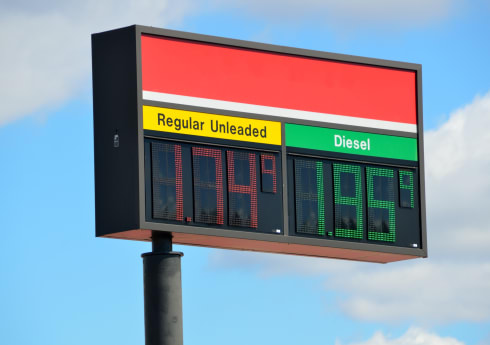Tachograph Systems: What You Need To Know

Having a tachograph system is a legal requirement for any business that uses professional drivers. It’s the obligation of the business owner and fleet manager to make sure all their vehicles are fitted with one — failure to do so is a breach of the rules around drivers’ hours.
In this guide you’ll find out exactly what a tachograph system is, the different types available and where your business can buy one.
What is a tachograph system?
A tachograph is a vehicle monitoring device and software designed to make sure that all of the driving activity for your drivers is recorded. This is to ensure they comply with the drivers’ hours laws, which are regulations that govern the time a professional can spend driving and how long their rest periods must be.
There are four main tachograph symbols used to record a driver’s activity:
- Drive: When a driver uses a vehicle and the engine is running (park time is included)
- Other work: A driver’s work activity when the engine is off (like unpacking goods)
- Available: When a driver is available to work but the engine isn’t on (e.g. ferry travel)
- Rest/break: A driver’s non-working time (both when on breaks or rests and off-shift)
All professional vehicles are required by law to have a tachograph fitted. It’s the obligation of fleet owners and managers to ensure that their drivers use the tachograph system fitted and that the laws regarding drivers’ hours are adhered to.
If you’re unsure about whether you need to install and use one of these systems, you should read the UK Government’s rules for drivers and operators. It includes useful resources, including the regulations for recovery vehicles, drive and rest/break times for drivers and any exemptions.
How tachographs record data
There are two different types of tachograph, analogue and digital.
However, it’s been a legal requirement since June 2019 that all new HGVs sold in the UK must use a digital tachograph. These digital systems allow enforcement agencies to remotely capture data, allowing them to establish if any rules are being broken without stopping drivers.
Arctic vehicles (refrigerated transport lorries) are another type of large goods vehicle that tachographs are important for. Professional drivers using refrigerated transport lorries must still comply with the drivers’ hours rules and the data recorded by tachographs helps demonstrate compliance. Ffarmers also use tachograph devices for their vehicles to provide them with peace of mind.
The associated legislation, simplicity and convenience of digital systems means analogue systems have largely become a thing of the past. Data from an analogue system has to be accessed by physically taking the tacho to the office or vehicle depot, whereas data from a digital tacho can be sent remotely.
Below, we explain how modern systems use a digital tachograph to record data and highlight how historic systems use an analogue tachograph sheet.
Digital tachograph cards
Drivers use a smart ID card to record their activity status. They put this into the tachograph, which then automatically records the data that shows what they’ve been doing.
Analogue tachograph sheets
This involved drivers manually entering their details by writing their activity status on a wax paper sheet. They put this into the tachograph at the beginning of their shift and for their activities to be recorded.
Best tachograph analysis software
With analogue tachographs being more prone to human error than digital ones, it’s in the interest of business owners and managers to invest in software rather than take the risk of using manual systems. This is because it’s the obligation of these individuals to guarantee that the correct data is recorded about their drivers.
There’s a wide range of tachograph analysis software available to fleet businesses.
Tacho software usually comes as an integrated part of a telematics system. Tacho analysis is standardised as its factual output is very clearly defined by law. This means that you would normally choose your tachograph analysis software based on the telematics offering around it, rather than on the tacho functionality alone.
The telematics provider will need to have an independent agency they work with that receives the data in a secure way and reads it to confirm independently that your drivers are compliant.
Protect your business by investing in a telematics device
Using a tachograph system ensures your business meets its requirements to comply with the rules around drivers’ hours. This protects your company against the implications of non-compliance with this legislation.
Telematic devices also help protect your business. These devices transmit a range of diagnostic data about your vehicles, including when they are activated, opened or closed. This means you can use telematic systems to tell you where your vehicles are and quickly establish if they might have been stolen or if they’re being misused by your drivers.
Tachographs are almost always used alongside a telematics system, which provides far more information to a fleet manager in real time.
Visit our telematics page to learn more about how these devices can help your business.
Vehicle tracking can give you a bird’s eye view of your fleet at all times, making it quick and easy to manage all your drivers. You can deal with breakdowns or accidents immediately and even check the driver dashcam footage or speeding incidents from your mobile phone.
As a free comparison site, iCompario can help you find the right system for the right price.
